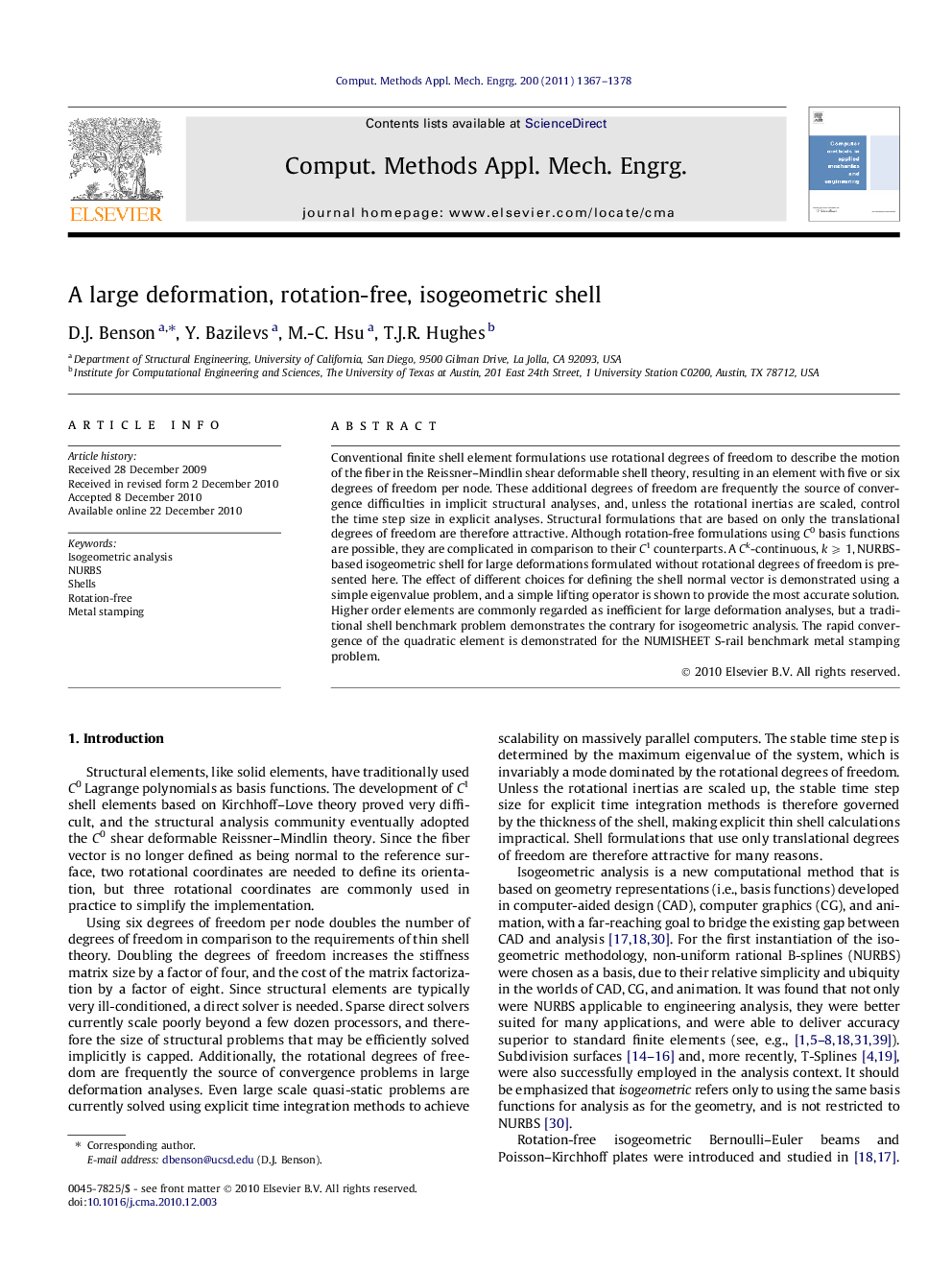| Article ID | Journal | Published Year | Pages | File Type |
|---|---|---|---|---|
| 498600 | Computer Methods in Applied Mechanics and Engineering | 2011 | 12 Pages |
Conventional finite shell element formulations use rotational degrees of freedom to describe the motion of the fiber in the Reissner–Mindlin shear deformable shell theory, resulting in an element with five or six degrees of freedom per node. These additional degrees of freedom are frequently the source of convergence difficulties in implicit structural analyses, and, unless the rotational inertias are scaled, control the time step size in explicit analyses. Structural formulations that are based on only the translational degrees of freedom are therefore attractive. Although rotation-free formulations using C0 basis functions are possible, they are complicated in comparison to their C1 counterparts. A Ck-continuous, k ⩾ 1, NURBS-based isogeometric shell for large deformations formulated without rotational degrees of freedom is presented here. The effect of different choices for defining the shell normal vector is demonstrated using a simple eigenvalue problem, and a simple lifting operator is shown to provide the most accurate solution. Higher order elements are commonly regarded as inefficient for large deformation analyses, but a traditional shell benchmark problem demonstrates the contrary for isogeometric analysis. The rapid convergence of the quadratic element is demonstrated for the NUMISHEET S-rail benchmark metal stamping problem.
